Danish Golden Age - An International Perspective
- Robert Rosenblum, arkivet.thorvaldsensmuseum.dk, 1997
Dette er en genudgivelse af artiklen: Robert Rosenblum: ‘Danish Golden Age Painting: An International Perspective’, in: Meddelelser fra Thorvaldsens Museum’ 1997, p. 45-58.
Se den oprindelige artikel i denne scanning.
This is a synopsis of a lecture illustrated by over eighty slides. As it was not read from a text, but given extemporaneously, I have tried to adapt it for publication as a resume of the major themes treated.
The Periodization of the Danish Golden Age
From the viewpoint of a foreign art historian – in my case, one from the United States – the idea of an artistic golden age in Denmark in the years c. 1815-50 is a bit puzzling. Having first concentrated on an international study of late eighteenth century art, I would not have been surprised to learn, for example, that the Danes designated the period of c. 1760-1810 as a golden age, for it was during those earlier decades, I realized, that Denmark produced many paintings and monuments whose precocity and daring give them truly international significance. If one were tracing, for instance, an iconographical history of the revival of Homer as an indication of the late eighteenth century’s enthusiasm for antiquity, then the Iliad cycle by Johan Mandelberg at Fredensborg Slot (1767) would play an essential, innovative role. If one were studying the wave of Sturm und Drang passion and fantasy that seized an international generation of artists who were all born c. 1740 and who went to Rome in the 1770s (including James Barry and Henry Fuseli), then the work of Mandelberg’s pupil Nicolai Abildgaard would be equally central, as evidenced in, for example, the agonies of The wounded Philoctetes (1774-75) (fig. 30), which even transcends Barry’s earlier interpretation of the theme (1770) in terms of psychological extremes of pain. And speaking of Abildgaard, if one were studying the emergence in the late eighteenth century of subjects culled from national history (a theme of major importance for the later development of nationalist currents in modern art), then his ten scenes from the lives of Danish kings, painted between 1778 and 1791 for Christiansborg Slot share international importance with such a comparable commission as Benjamin West’s for the King’s Audience Chamber at Windsor (1786-89), scenes from the life of Edward III that, in West’s other reconstructions of British history, were supplemented by scenes from later history, including the seventeenth century, the equivalent of Abildgaard’s depictions of events in the life of Christian IV.
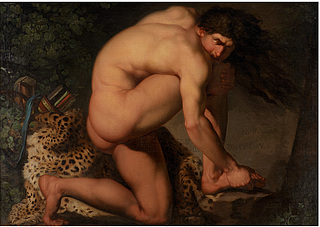
Fig. 30. Nicolai Abraham Abildgaard (1743-1809): The wounded Philoctetes, 1775. Oil on canvas. 123×173.5 cm. Statens Museum for Kunst, Copenhagen. Inv. no. 586.
Consider, too, the late eighteenth century passion for reducing forms to their geometric and structural essences – cubes, spheres, pyramids, posts, lintels, arches — undoubtedly best known in the ideal architecture Claude-Nicolas Ledoux proposed in the 1770s and 1780s. But this same passion finds its expression not only on paper, but as actually built in the astonishing commemorative monuments – half-sculpture, half-architecture – erected at Jægerspris by Johannes Wiedewelt in the 1770s, works that, looked at internationally, now seem at the very source of the rich vein of primitivism (whether of geometric form or of natural origins) that marks so much of modern art, right up to the sculpture of Constantin Brancusi or the earthworks of Robert Smithson (fig. 31). And in terms of architecture, the work of Christian Frederik Hansen marks an archievement of Neoclassic distilled purity that can rival the most austere, neo-Doric buildings of Russia and Germany (fig. 32). Indeed, the sharp-edged severity of plane and mass in Hansen’s work can already be found in the fictional buildings that form backdrops for Abildgaard’s own paintings set in the classical world.
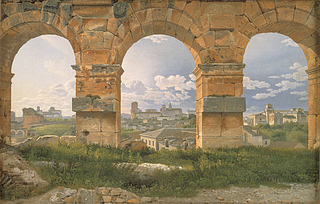
Fig. 33. Christoffer Wilhelm Eckersberg (1783-1853): A View through Three of the Northwestern Arches of the third Story of the Colosseum, 1815 or 1816. Oil on canvas. 32×49.5 cm. Statens Museum for Kunst, Copenhagen. Inv. no. 3125.
The Danish Golden Age in Western Art History
However, my task here is not so much to assess the international significance of earlier and later periods when Danish art flourished, but rather to focus on the period traditionally referred to as the Golden Age. For a foreigner, these decades can be looked at in two different yet complementary ways, corresponding, in fact, to the way most of us experience national differences when we travel from one country to the other. On the one hand, we may be tempted to unite Danish art with similar chronological developments in other Western nations, whether in Scandinavia itself or in countries as far away as the United States or Russia. On the other hand, we may turn from this international community of Western art and concentrate on the more subtle characteristics that give Danish art a different flavor.
To begin with the broad, international approach, we may consider Christoffer Wilhelm Eckersberg’s famous painting of a view through three of the arches of the Colosseum, painted during his Roman sojourn of 1813-16 (fig. 33). It is a painting that looks backwards, forwards, and sideways in terms of international art history. The lucid tripartite geometry of the arcaded architecture immediately recalls one of the most famous paintings by Eckersberg’s French master, Jacques-Louis David’s Oath of the Horatii, but of course, the conception has changed from an immaculate, idealized vision of ancient beauty and heroism to an empirical record of contemporary archaeological fact that just happened to be noticed by someone walking through the Roman forum. In this, it is closely allied to the vision of many of Eckersberg’s contemporaries who, like him, left their native country and worked in Italy in the first decades of the nineteenth century. Most particularly, it can be compared to a view by Camille Corot of a similar fragment of Roman architecture, three arches from the Basilica of Constantine through which we see a distant view of the Colosseum and which, like Eckersberg’s cropped view of an ancient Roman arcade, seems to extend in all directions, a minor part of a much larger whole. And thinking, too, of the spatial construction in Eckersberg’s painting, with its strong contrast of foreground and background, of the very near and the very far, we may also be reminded of the work of Caspar David Friedrich, whose painting of the grave of the German sixteenth-century patriot, Ulrich von Hutten, also presents a symmetrical trio of arches, now Gothic rather than Roman, that silhouettes a remote view. But seen beside the Romantic intensity of Friedrich’s construction, with its rigorous, emblematic clarity and symbolic contrast of distant sunstreaked sky beyond a dark skeleton of soaring architecture, Eckersberg’s painting, like Corot’s, seems to belong to a new realm of plain prose rather than rhetorical poetry.
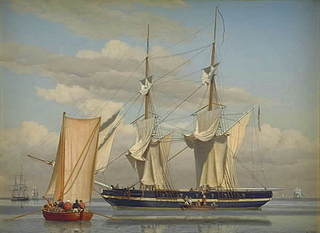
Fig. 34. Christoffer Wilhelm Eckersberg (1783-1853): A Calm. A Boat pulling out to an American Man-of-War Drying Sails, 1831-1832. 40×55 cm. Oil on canvas. Statens Museum for Kunst, Copenhagen. Inv. no. 6346.
Eckersberg’s art, in fact, displays many analogies with Corot’s, and when they painted the same sites, such as S. Trinità de’ Monti, the results share that new search for casual, unforced truth of observation which motivates painters from many different countries in the early nineteenth century. The pursuit of a vision corresponding to experiential facts unites Corot with another Danish Golden Age painter, Christen Købke. It is revealing to see together these two artists’ views of two famous Renaissance castles – one Danish, Frederiksborg (1835), and one French, Rosny (1840). Only five years apart in date, they both approach these venerable buildings as if they had almost stumbled upon them by accident and were indifferent to their weighty histories. The angle of vision avoids the fixed and the static, minimizing the commanding, symmetrical authority potential to the depiction of these major monuments. And the presence of what seem to be accidental details in both paintings – the rowboat moored in the forground of the Købke, the woman artist before her easel on the chateau’s lawn in the Corot – contributes to the feeling that both artists hoped to record the unplanned minor truths of ordinary experience. It is the same grasp of prosaic fact, instantly subject to change, that marks two street views of the 1830s by the same two artists, Købke’s View of Østerbro (1836) and Corot’s unusually sharp-focus depiction of M. Henry’s home and factory in Soissons (1833). And equally, Købke’s and Corot’s portraits, especially of those members of their families seen in the most modest circumstances, almost merge in their candor and simplicity, with both artists recording, as in the depictions of their sisters, the plain and simple facts of ordinary faces and clothing rendered even more specific by being placed against a neutral background.
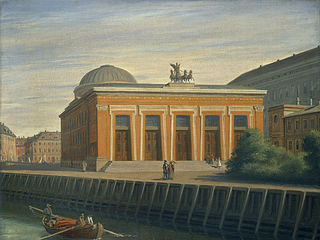
Fig. 35. Constantin Hansen (1804-1880): View of Thorvaldsens Museum, 1858. 36.3×43.8 cm. Oil on canvas. Thorvaldsens Museum. B442.
On many other levels of comparison, Danish Golden Age painting belongs to international currents. Johan Thomas Lundbye’s studies of trees and clouds, like Købke’s, are profitably studied together with similar sky studies by other artists working in the 1820s and 1830s, such as the Norwegian Johan Christian Clausen Dahl or the British John Constable, just as Lundbye’s limpid views of landscape fragments, experienced as if observed on a walk in the woods, have parallels in the work of, say, the German Wilhelm Kobell or the Russian Aleksei Venetsianof. Moreover, particularly close parallels with American painters can be made. The magically still and luminous atmosphere familiar to many landscape paintings of America’s unpopulated coasts and rivers, as in works by William Sidney Mount or George Caleb Bingham, often feel completely at home with Danish paintings of the same decades; and more specifically, Eckersberg’s marine paintings such as his depiction of an American Naval Brig at Anchor (1831-32) (fig. 34) are almost identical to such American marine paintings as those by Fritz Hugh Lane. Viewed in this international way, Denmark’s painters of the Golden Age are voices singing in harmony with a full chorus of Western artists.
The Unique Characteristics of the Danish Golden Age
Yet a foreigner like myself will be intrigued not only by the convergence of, say, Danish and American painting, but also by the way in which we may discern uniquely Danish qualities that alert us to the fact that we have crossed from one national boundary to another. One such quality may have to do with what appears to me a Danish penchant for extremes of geometric simplification rare in other countries. Wiedewelt and Hansen have already been cited, but of course, the most famous monument of this willful archaism is Gottlieb Bindesbøll’s Thorvaldsens Museum (1839-47), which for historians of modern architecture could become a prophetic touchstone of undecorated simplicity leading to the International Style (fig. 35). (The building was long a favorite of Philip Johnson and Henry-Russell Hitchcock.) It is worth noting that this lucid reduction of architectural mass and plane appears in many Danish paintings of the 1830s and 1840s as well, witness Købke’s View outside the North Gate of the Citadel (1834) (fig. 36), where the gateway to the bridge is defined with a sharp-edged clarity worthy of ancient Egypt; or Lundbye’s view of the Romanesque church in his birthplace, Kalundborg (1837), whose massive towers are rendered with a maximum emphasis on their geometric purity; or, most extraordinarily, the amazing building Eckersberg painted in the background of his Christ and the Woman Taken in Adultery (1843), which purports to evoke massive Egyptian grandeur but which looks more like a prototype for the kind of bare, utilitarian factory buildings admired by early twentieth-century partisans of architectural reform. Eckersberg’s attraction to this primitive geometric clarity can be seen as well in the rockbottom spatial structure of such other paintings as Christian I as the Founder of the Order of the Elephant (1841) (see fig. 11, p. 29), whose rigid, austere symmetry goes even beyond Ingres’s own explorations of the flat schemata of medieval pictorial art, or the Last Supper, (1839-40), which similarly evokes the abstract planar order of painting before the Renaissance (fig. 37). It is worth mentioning that Eckersberg’s figure paintings, whether of classical nudes, such as his Three Spartan Boys of 1812 (fig. 38), executed under the aegis of David in Paris, or of a Biedermeier family group, such as his portrait of the merchant Mendel Levin Nathanson’s daughters (1820), similarly reveal this attraction to stark contrasts of parallel and perpendicular planes and postures, an archaism also evident in many of Thorvaldsen’s sculptures, (such as Ganymede with Jupiter s Eagle (1817) (fig. 39). It is the kind of rigid, schematic clarity that, in the case of Eckersberg, can even immobilize scenes of overt motion, a point made clear in his two eccentric street scenes of stormy weather (1845) and sudden panic (1836) where, in a preview of Giorgio de Chirico’s dreamlike spaces, people seem to be paralyzed in their places while wishing to flee.
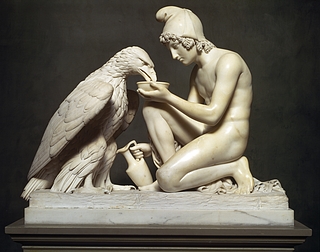
Fig. 39. Bertel Thorvaldsen (1770-1844): Ganymede’s with Jupiter’s Eagle. Original plaster model 1817. Marble. H: 93,3 cm. Thorvaldsens Museum. A44.
The foreign viewer may notice many other traits that appear particularly Danish. There is, for example, an amusing penchant for domesticating the world of Greco-Roman antiquity, a world which might seem exalted and remote in the hands of other Western artists. Already in the work of Abildgaard, in the illustrations to Terence’s play, The Girl from Andros (1801-03), the immaculate renderings of Neo-Greek architecture are brought to contemporary earth by becoming what look like stage sets for modern genre narratives, a preview of Eckersberg’s Copenhagen Street scenes (fig. 40). And in later decades, this domestication can take on an almost comical character. Købke’s tidy depiction of the display of plaster casts from the Parthenon marbles at Charlottenborg instantly falls from Olympus when we see a guard carefully dusting their immaculate white surfaces (1830). Similarly in the still lifes of Johan Laurents Jensen, we may smile to discover that a classic Greek vase which we might expect to find behind a vitrine in a museum collection of antiquities is simply used as a domestic flower pot, crammed with a luxurious abundance of blossoms that graces the decorative scheme of a mid-nineteenth century Danish home but totally belies the antique ceramic’s severity of form and image.
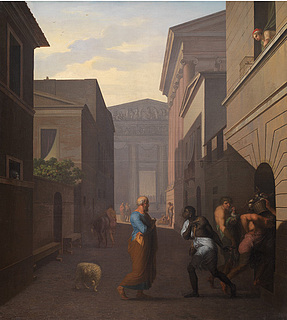
Fig. 40. Nicolai Abraham Abildgaard (1743-1809): Simo tells Sosia, his former Slave, about his worries because of his Son’s relationship to the Girl from Andros. Scene from Terence’s The Andria. 1803.157.5×142 cm- Statens Museum for Kunst, Copenhagen. Inv. no. 587.
I have been struck, too, by other recurrent traits that seem distinctive to Danish painting. One is a curious spatial device that would place the spectator at the illusionistic threshold of a path that enticingly leads to a more distant landscape. It can be seen, for instance, in Købke’s View from the Loft of the Grain Store at the Citadel’s Bakery (1833), in which we are surprisingly perched at the top of a steep flight of steps that beckon us to come out into the sunshine; it can be seen in Dankvart Dreyer’s Bridge over the Friedhofsbach (1842), where we find ourselves just at the edge of a footbridge, about to cross a narrow stream; and it can be seen in a view of a pond by Lundbye (1838), in which a wooden plank, like a diving board, lures us into entering the picture and perhaps the water (fig. 41). It is a device that even recurs at the end of the century in the work of Laurits Andersen Ring, who consciously revived the spirit and landscape motifs of Lundbye and who once painted his pregnant wife standing at the edge of a flight of wooden stairs leading into the garden (1897), an almost direct paraphrase of Købke’s girl at the top of the granary stairway.
The sense of unedited truth we often feel in Golden Age painting can produce, too, another curious phenomenon one is tempted to identify as peculiarly Danish, and that is the treatment of the nude, the foundation of academic studies. Nude models, of course, are common motifs in all of Western painting, and there are infinite examples throughout nineteenth-century art; but in Denmark, these painted studies of the human body look completely at odds with, say, their French counterparts in the work of Géricault or Delacroix. Completely specific and usually posed in awkward, angular postures, the nudes of Købke, Bendz, Hansen, and most particularly Eckersberg produce in the spectator the uncomfortable feeling of staring at another human being who has been stripped of clothing. These naked bodies are scrutinized with a steady, clear gaze that pays equal attention to details of physiognomy and details of genitalia, which, in the case of Eckersberg’s female nudes, include precisely painted pubic hair (most rare, for example, in French academic studies of the female nude). In Eckersberg’s nudes, in fact, there is often a strange sexual charge, the model almost a prisoner of the artist’s controlling gaze (fig. 42). These cold, almost clinical facts about the naked human body seem to have progeny in later Danish art, discernible, for example, in Hammershøi’s painting of a female model (1889) and, in the 1920s and 30s, in the Machine Age nudes of Vilhelm Lundstrøm.
If I began these remarks by questioning how, for a foreigner, the term “Golden Age” might equally apply to the late eighteenth century, I might conclude by noting that for many of us, the Golden Age might also be defined as the late nineteenth century, when Hammershøi rises easily to the heights of Købke’s international stature and when many other Danish painters, such as Anna Ancher, Jens Ferdinand Willumsen, Ejnar Nielsen, Peder Severin Krøyer, and Laurits Andersen Ring produced a rich variety of pictorial inventions that not only have strongly individual character, but that can be paralleled in other Western countries. Willumsen’s cosmic visions of blazing suns have counterparts, for example, in the work of the Polish symbolist Wojciech Weiss; Nielsen’s melancholic obsession with illness and death is shared by, among other of his contemporaries, the Swiss Ferdinand Hodler. And Hammershøi’s fascination with the mysteries of domestic interiors (fig. 43), especially when empty, are no less familiar to Belgian painting, c. 1900, witness the work of Xavier Mellery or Léon Spilliaert. And looking even further ahead, many Danish paintings of the turn of the century seem to be at home with aspects of twentieth century American painting. Hammershøi’s bare but sunlit interiors offer previews of the light-filled geometric prisons that Edward Hopper created from commonplace American rooms; and the bleak loneliness of Ring’s In June. Girl Blowing Dandelion Seeds (1899) (fig. 44) provides an unexpected prophecy of one of America’s most popular paintings, Andrew Wyeth’s Christinas World (1948). Here, as elsewhere, we may choose, when thinking about Danish painting, to remain within national boundaries or to expand our vision to the international community of Western art.
Sidst opdateret 11.05.2017